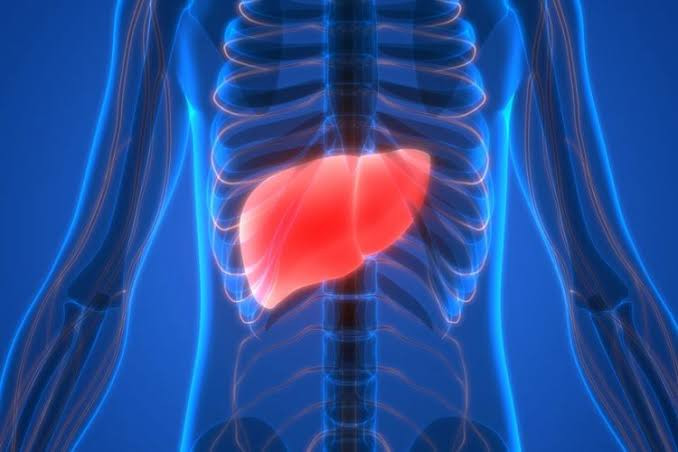Definisi
Hepatitis C adalah penyakit peradangan pada organ liver (hati) yang disebabkan oleh infeksi virus Hepatitis C (HCV). Virus hepatitis C adalah virus yang ditularkan melalui darah dan sebagian besar infeksi terjadi melalui paparan darah dari penggunaan jarum suntik yang tidak aman, perawatan kesehatan yang tidak aman, transfusi darah yang tidak disaring, penggunaan narkoba suntik, dan aktivitas seksual yang menyebabkan seseorang terpapar pada darah penderita.
Secara umum, hepatitis C dapat dibedakan menjadi akut dan kronis berdasarkan lamanya infeksi terjadi. Hepatitis C akut adalah infeksi jangka pendek, di mana gejalanya bisa bertahan hingga 6 bulan dan terkadang tubuh mampu melawan infeksi, sehingga virusnya hilang secara sempurna. Akan tetapi pada kebanyakan orang, infeksi akut berkembang menjadi infeksi kronis. Hepatitis C kronis merupakan infeksi jangka panjang yang jika tidak diobati, dapat bertahan seumur hidup dan menyebabkan masalah kesehatan yang serius. Komplikasi yang dapat muncul adalah kerusakan hati, sirosis (jaringan parut pada hati), kanker hati, dan bahkan kematian.
Secara global, diperkirakan 58 juta orang menderita infeksi virus hepatitis C kronis, dengan sekitar 1,5 juta infeksi baru terjadi per tahun. WHO memperkirakan pada tahun 2019, sekitar 290.000 orang meninggal karena hepatitis C, dimana sebagian besar dikarenakan sirosis dan kanker hati primer.
Penyebab
Penyakit hepatitis C disebabkan oleh virus Hepatitis C (HCV). Penularan terjadi ketika darah yang terkontaminasi virus memasuki aliran darah orang yang tidak terinfeksi. Cairan tubuh lainnya juga dapat mengandung virus, tetapi darah memiliki kandungan virus yang paling tinggi. Jumlah darah yang sedikit saja telah bisa menularkan infeksi. Penularan HCV paling sering terjadi melalui:
- Penggunaan berulang atau sterilisasi peralatan medis yang tidak memadai, terutama alat suntik dan jarum suntik di fasilitas kesehatan
- Transfusi darah dan produk darah yang tidak disaring
- Pemakaian narkoba dengan penggunaan jarum suntik secara bersamaan
Meskipun hal-hal berikut lebih jarang terjadi, HCV juga dapat menyebar melalui:
- Dari ibu yang terinfeksi kepada bayinya, saat kehamilan atau melahirkan
- Aktivitas seksual yang menyebabkan paparan darah dengan orang yang terinfeksi HCV (cara penularan ini tidak terlalu efisien, meskipun laki-laki yang terinfeksi HIV dan berhubungan seks dengan laki-laki memiliki peningkatan risiko penularan seksual)
- Penggunaan bersama barang pribadi yang terkontaminasi darah, seperti pisau cukur atau sikat gigi
- Proses pembuatan tato atau tindik dengan alat yang tidak steril
- Kejadian tertusuk jarum di fasilitas kesehatan
Hepatitis C tidak menyebar melalui ASI, makanan, air, atau kontak fisik seperti berpelukan, berciuman dan berbagi makanan atau minuman dengan orang yang terinfeksi.
Faktor Risiko
Kemungkinan Anda terinfeksi hepatitis C akan meningkat jika Anda:
- Pernah menggunakan narkoba suntik
- Memiliki riwayat transfusi darah atau transplantasi organ yang tidak melalui proses skrining hepatitis C
- Pernah menjalani cuci darah
- Memiliki hasil pemeriksaan hati yang tidak normal atau memiliki riwayat penyakit hati
- Pernah kontak dengan darah atau jarum yang terinfeksi di tempat kerja, khususnya di fasilitas kesehatan (rentan terjadi pada dokter, perawat, pekerja laboratorium)
- Pernah membuat tato atau tindik di badan dengan alat yang tidak steril
- Pernah bekerja atau tinggal di penjara
- Lahir dari ibu dengan hepatitis C
- Menderita HIV/AIDS
- Memiliki lebih dari satu pasangan seks dalam 6 bulan terakhir
- Pernah menderita penyakit menular seksual
- Berhubungan seksual dengan sesama jenis (laki-laki dengan laki-laki)
Gejala
Pada tahap awal infeksi atau yang sering disebut fase akut, gejala hepatitis C mirip dengan sakit flu biasa, tetapi Anda mungkin juga tidak memiliki gejala sama sekali. Gejala biasanya muncul antara 2 sampai 12 minggu setelah terpapar virus, yang dapat terdiri dari:
- Sakit perut
- Urine berwarna gelap
- Kelelahan
- Demam
- Kulit atau bagian putih mata (sklera) berwarna kuning
- Nyeri sendi
- Nafsu makan berkurang
- Mual
- Muntah
Pada hepatitis C kronis, dimana infeksi terjadi dalam jangka waktu yang lama, seringkali infeksi tidak menyebabkan gejala selama bertahun-tahun sampai virus cukup merusak organ hati. Selain gejala-gejala yang ditemukan pada fase akut, hepatitis C kronis juga bisa menimbulkan gejala lainnya, seperti:
- Mudah berdarah
- Mudah memar
- Gatal pada kulit
- Adanya penumpukan cairan di perut (asites)
- Bengkak pada kaki
- Penurunan berat badan
- Kebingungan, kantuk dan bicara cadel bila fungsi otak mulai terpengaruh
- Adanya pembuluh darah yang terlihat seperti laba-laba di kulit (spider nevi)
Diagnosis
Dalam mendiagnsosis Hepatitis C, dokter akan mulai dengan wawancara untuk menanyakan gejala-gejala yang Anda alami dan juga riwayat faktor risiko yang mungkin Anda pernah miliki. Kemudian dokter juga akan melakukan pemeriksaan fisik untuk memeriksa tanda-tanda kerusakan hati seperti perubahan warna pada kulit, pembengkakan di kaki bagian bawah atau pergelangan kaki, dan nyeri tekan atau bengkak di perut.
Selanjutnya dokter akan menyarankan pemeriksaan lebih lanjut, khususnya pemeriksaan darah karena seringkali kasus Hepatitis C tidak bergejala. Hepatitis C biasanya didiagnosis menggunakan 2 tes darah, yaitu:
- Tes Antibodi
Tes antibodi dalam darah akan menentukan apakah Anda pernah terpapar virus hepatitis C dengan menguji keberadaan antibodi terhadap virus. Jika pernah terpapar virus, sistem kekebalan tubuh akan membentuk antibodi untuk melawannya. Akan tetapi, hasil tes tidak akan menunjukkan reaksi positif selama beberapa bulan setelah infeksi karena tubuh membutuhkan waktu untuk membuat antibodi ini.
Jika hasil tes negatif, tetapi Anda memiliki gejala atau mungkin telah terpapar virus hepatitis C, Anda mungkin disarankan untuk melakukan tes ulang kembali. Tes positif menunjukkan bahwa Anda telah terinfeksi pada tahap tertentu, tetapi tidak berarti Anda sedang terinfeksi, karena mungkin tubuh telah membersihkan virus dari tubuh Anda.
Satu-satunya cara untuk mengetahui apakah Anda saat ini sedang terinfeksi adalah dengan melakukan tes darah yang kedua, yang disebut tes PCR.
- Tes PCR (Polymerase Chain Reaction)
Tes darah dengan metode PCR dapat memeriksa apakah virus masih ada dengan menilai apakah virus itu sedang bereproduksi di dalam tubuh Anda dengan mendeteksi RNA virus. Hasil tes positif menunjukkan bahwa tubuh Anda belum melawan virus dan Anda saat ini sedang terinfeksi.
Selain pemeriksaan untuk mendeteksi virus Hepatitis C, dokter juga mungkin akan melakukan pemeriksaan lainnya untuk memeriksa kerusakan hati, mencari tahu berapa banyak kerusakan hati yang Anda miliki, atau mengesampingkan penyebab lain dari penyakit hati. Pemeriksaan lain yang mungkin disarankan, meliputi:
- Tes darah, untuk mengukur kadar enzim dan protein tertentu dalam aliran darah Anda yang menunjukkan apakah hati mengalami kerusakan atau sedang mengalami radang.
- Pemindaian ultrasound (elastography), di mana gelombang suara digunakan untuk memeriksa struktur hati Anda dengan menilai adakah kekakuan yang timbul akibat adanya jaringan parut di hati.
- Biopsi hati, di mana dokter menggunakan jarum untuk mengambil sepotong kecil jaringan dari hati Anda. Biopsi hati biasanya dilakukan hanya jika tes lain tidak memberikan informasi yang cukup tentang kerusakan atau penyakit hati Anda.
Tata Laksana
Beberapa pilihan pengobatan yang mungkin disarankan dokter jika Anda terdiagnosis Hepatitis C, antara lain:
- Obat antivirus
Tujuan pemberian obat antivirus adalah agar tidak ada virus hepatitis C yang terdeteksi di tubuh Anda setidaknya 12 minggu setelah Anda menyelesaikan pengobatan.
- Transplantasi hati
Transplantasi hati dapat menjadi pilihan jika Anda telah mengalami komplikasi serius dari infeksi hepatitis C kronis. Dalam kebanyakan kasus, transplantasi hati saja tidak menyembuhkan hepatitis C. Infeksi kemungkinan akan kembali sehingga memerlukan pengobatan dengan obat antivirus untuk mencegah kerusakan pada hati yang ditransplantasikan.
- Perubahan gaya hidup
Dokter juga mungkin akan merekomendasikan beberapa perubahan gaya hidup tertentu, seperti:
-
- Menghentikan kebiasaan minum alkohol
- Hindari obat-obatan yang dapat menyebabkan kerusakan hati
- Mencegah orang lain bersentuhan dengan darah Anda, dengan cara:
- Menutupi semua luka yang Anda miliki
- Jangan gunakan pisau cukur atau sikat gigi bersamaan dengan orang lain
- Jangan mendonorkan darah, organ tubuh atau sperma
- Beri tahu petugas kesehatan bahwa Anda menderita Hepatitis C
- Beri tahu pasangan tentang infeksi yang Anda miliki sebelum berhubungan seks, dan selalu gunakan kondom saat berhubungan
Komplikasi
Infeksi hepatitis C yang berlanjut selama bertahun-tahun dapat menyebabkan komplikasi yang signifikan, seperti:
- Sirosis hati, jaringan parut yang mungkin timbul setelah beberapa tahun infeksi hepatitis C berlangsung dan akan membuat hati sulit berfungsi secara sempurna
- Kanker hati
- Gagal hati yang dapat timbul saat sirosis terus berlanjut dan bisa menyebabkan hati Anda berhenti berfungsi
Pencegahan
Sampai saat ini tidak ada vaksin yang efektif melawan virus hepatitis C sehingga pencegahan tergantung pada pengurangan risiko paparan virus, khususnya pada fasilitas kesehatan dan populasi risiko tinggi. Beberapa langkah yang dapat dilakukan untuk mencegah paparan virus Hepatitis C, antara lain:
- Berhenti menggunakan obat-obatan terlarang, terutama yang menggunakan jarum suntik
- Berhati-hati saat melakukan tindik dan tato, pastikan alat-alat yang digunakan dalam keadaan steril
- Melakukan hubungan seksual yang aman. Jangan melakukan hubungan seksual tanpa kondom dengan banyak pasangan atau dengan pasangan yang status kesehatannya tidak pasti.
Kapan Harus ke Dokter
Temui dokter jika Anda memiliki gejala-gejala dari Hepatitis C, khususnya gejala penyakit pada fase kronis. Dokter mungkin merekomendasikan untuk melakukan tes darah yang dapat memeriksa Hepatitis C. Seringkali Hepatitis C tidak menunjukkan gejala pada tahap awal infeksi, sehingga disarankan Anda melakukan skrining terhadap Hepatitis C jika Anda mempunyai salah satu faktor risiko terhadap paparan virus Hepatitis C.
Mau tahu informasi seputar penyakit lainnya? Cek di sini, ya!
- dr Hanifa Rahma
CDC. Hepatitis C. (2020). Accessed January 21,2022, from https://www.cdc.gov/hepatitis/hcv/index.htm
Hepatitis C. (2021). Accessed January 21,2022, from https://www.mayoclinic.org/diseases-conditions/hepatitis-c/symptoms-causes/syc-20354278
Hepatitis C. (2021). Accessed January 21,2022, from https://medlineplus.gov/hepatitisc.html
Hepatitis C. (2021). Accessed January 21,2022, from https://www.nhs.uk/conditions/hepatitis-c/
National Institute of Diabetes and Digestive and Kidney Diseases. Hepatitis C. (2020). Retrieved 21 Januari 2022, from https://www.niddk.nih.gov/health-information/liver-disease/viral-hepatitis/hepatitis-c
Ratini, M. Hepatitis C and the Hep C Virus. (2021). Accessed January 21, 2022, from https://www.webmd.com/hepatitis/digestive-diseases-hepatitis-c
WHO. Hepatitis C. (2021). Accessed January 21, 2022, from https://www.who.int/news-room/fact-sheets/detail/hepatitis-c






/6302128dc2a2c.jpg)





